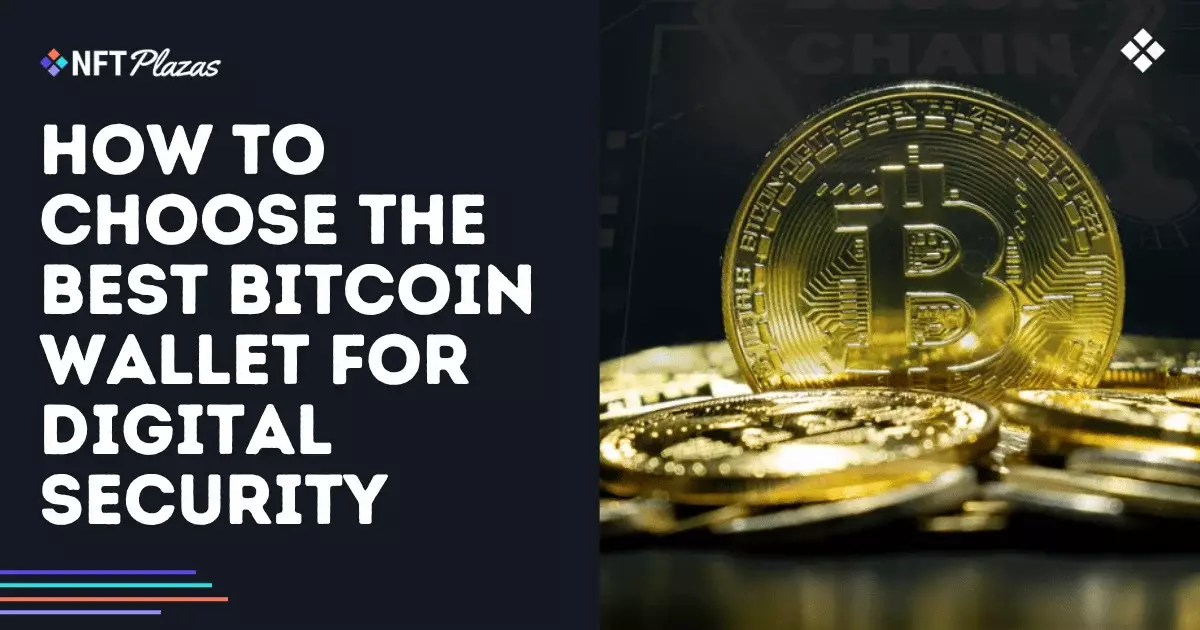As Bitcoin continues to gain acceptance and popularity in the financial world, the shadowy specter of theft and loss looms larger. The surge in Bitcoin’s value and the mainstream interest in cryptocurrencies have attracted nefarious players who seek to exploit vulnerabilities in the system. For those invested in this digital gold, choosing a Bitcoin wallet becomes paramount—not merely as a matter of convenience but as an essential safeguard for one’s wealth. While the allure of quick gains is intoxicating, the risks associated with mismanaged digital assets must not be overlooked. Selecting a wallet isn’t just about preferences; it’s about survival in a landscape rife with unpredictability.
Understanding the Essence of Bitcoin Wallets
At the core of every Bitcoin wallet lies a pivotal concept: private keys. These cryptographic keys are the linchpin of ownership within the blockchain framework. It’s crucial to understand that a wallet itself does not store Bitcoin; instead, it grants access to the coins recorded on an immutable ledger. This understanding reveals the importance of selecting the right type of wallet to suit individual needs. If the keys are lost or compromised, the cryptocurrency is rendered inaccessible forever—a tragedy that can befall even the most cautious of users.
The landscape is made up of three primary types of wallets: software, cold, and hardware. Each presents a unique balance of security and usability, and opting for the right wallet often demands a trade-off. The decision shouldn’t be taken lightly; what works for one person might not be sufficient for another.
The Paradox of Software Wallets
Software wallets are the double-edged sword of the crypto world. While they offer convenience and swift access for users glued to their devices, they also invite significant risk. In an interconnected landscape where hacking and malware attacks are rampant, the security of software wallets can often be compromised. Users often romanticize the idea of managing their assets on the go, only to realize that this ease comes at the price of increased vulnerability. These wallets are a lightning rod for attacks, leaving unprepared users facing potential bankruptcy as their investments vanish with a few careless clicks.
Educating users on the inherent dangers is critical; ignorance in this realm can be devastating. It’s not just about picking a software or cold wallet—it’s about understanding and leveraging security measures effectively.
Cold Wallets and Their Advantages
Cold wallets, in contrast, offer an enviable level of security by keeping private keys offline, away from prying eyes. These wallets—often represented by paper instructions or air-gapped systems—are revered for their impenetrability, eliminating most online attack vectors. However, the trade-off comes in terms of user experience and transaction speed. Navigating the complex processes required to utilize cold wallets can deter even the most determined investors.
They serve as a safe haven for long-term holders but can be intimidating for newcomers eager to dive into the cryptocurrency market. Users must undergo a steep learning curve and be diligent about maintaining physical copies of their keys. The security offered is undeniable, yet the clumsy nature of cold wallets remains a significant barrier to entry for many prospective investors.
Hardware Wallets: The Middle Ground
The advent of hardware wallets marks a revolutionary shift in how cryptocurrency can be managed, offering a delicate balance of usability and security. These dedicated devices create and store private keys offline, ensuring that they are shielded from the prying eyes of the web. Notably, hardware wallets like those produced by Ledger have gained popularity for their multifaceted security features, striking the right balance between safeguarding assets and offering user accessibility.
However, even these wallets come with their own set of challenges. The requirement for users to manage recovery phrases securely introduces another layer of complexity, and the necessity of purchasing a physical device may deter some. Yet the growing accessibility of these wallets, alongside improved interfaces and that enticing promise of security, makes them an increasingly appealing option for serious investors seeking to protect their cryptocurrency holdings.
As the cryptocurrency landscape continues to evolve, the populace must remain vigilant and educated. The world of Bitcoin wallets is rife with challenges and choices, and the path to secure management of digital assets requires thoughtful consideration and proactive engagement. The stakes are high, and complacency is a luxury that few can afford.

